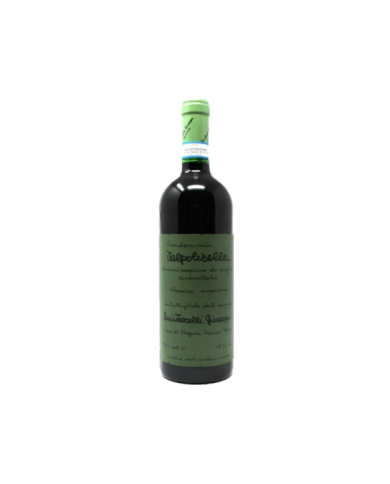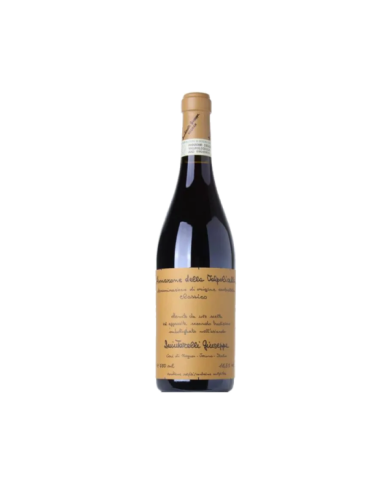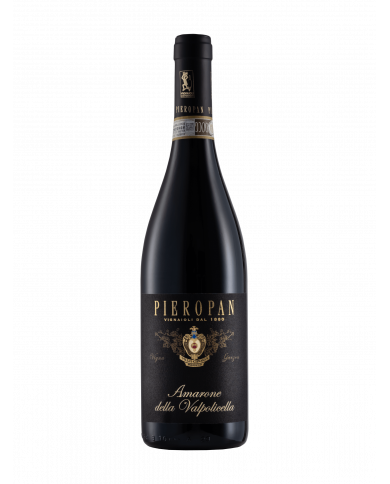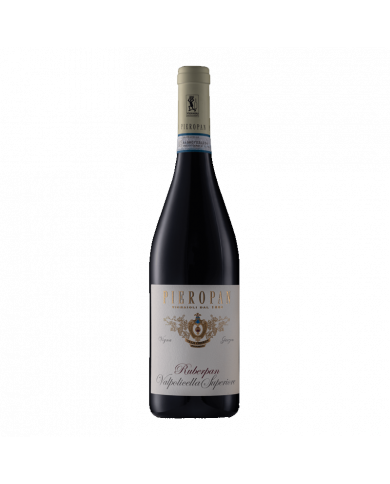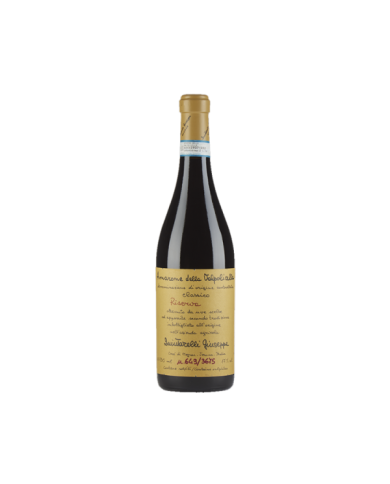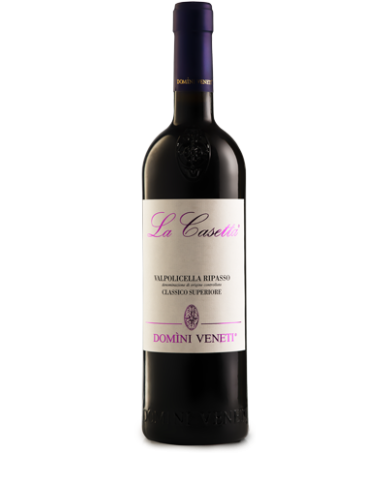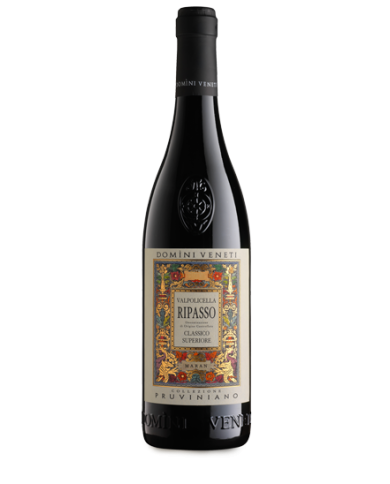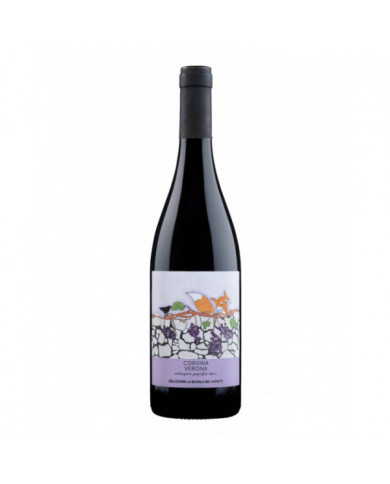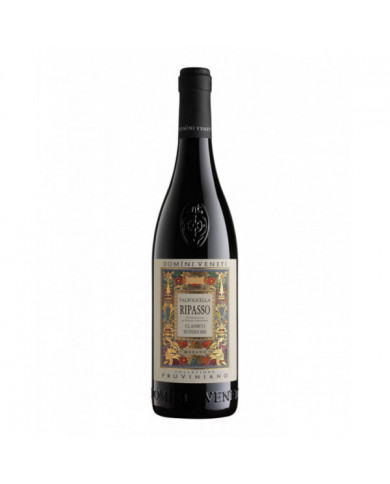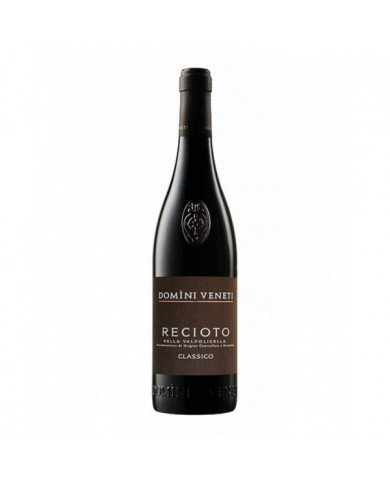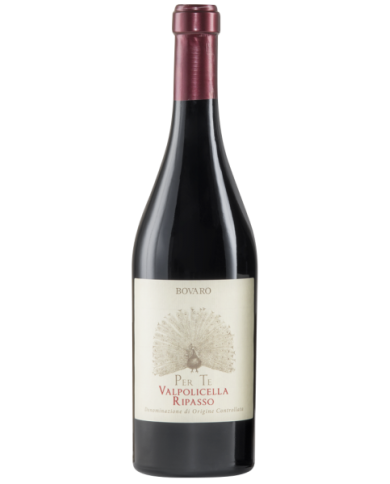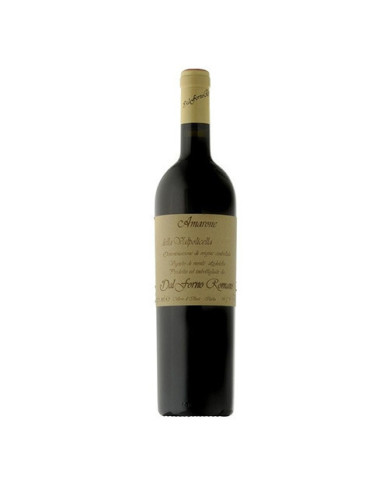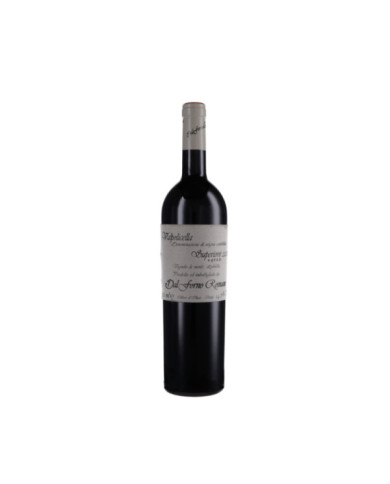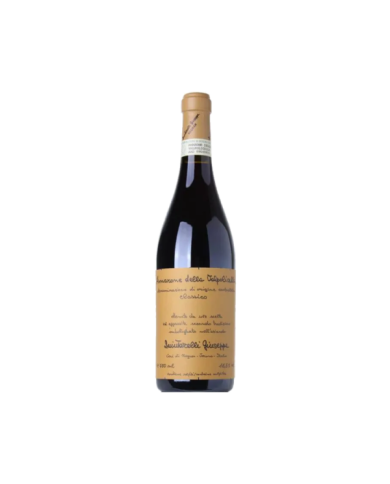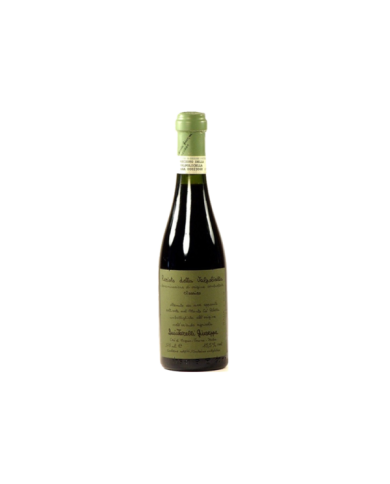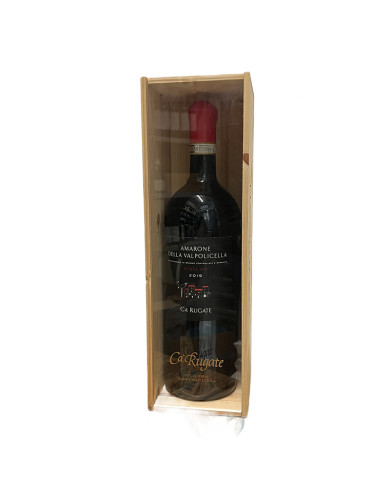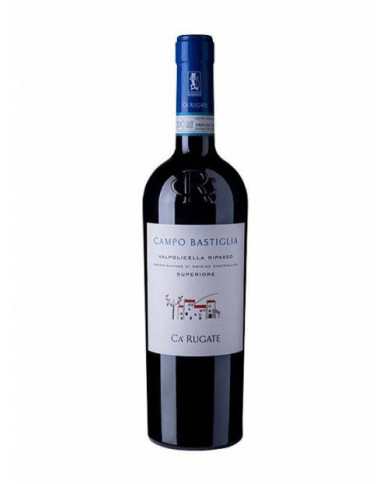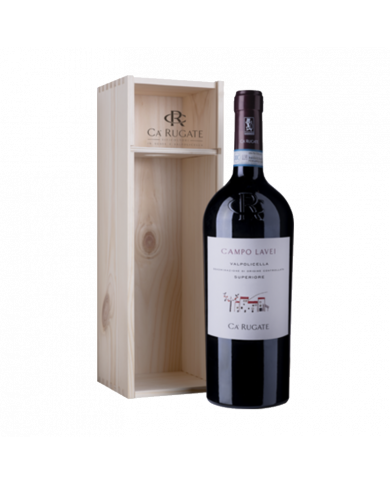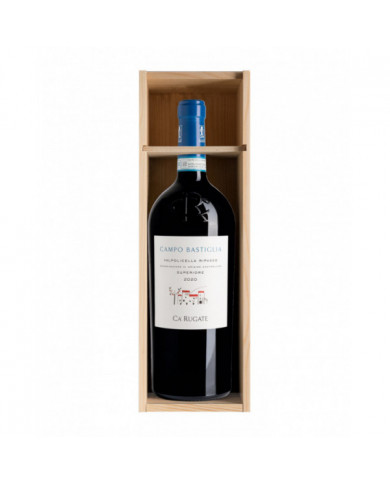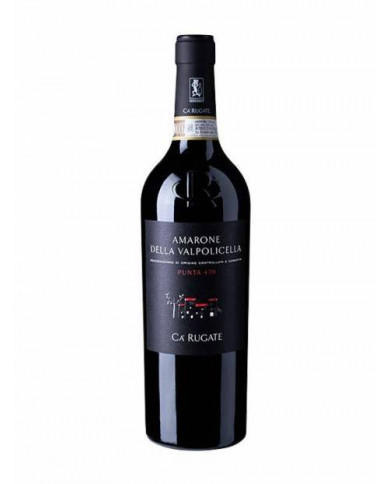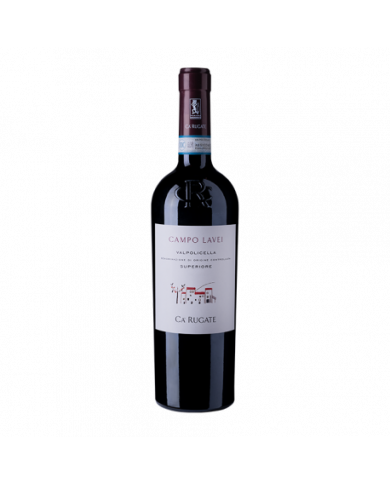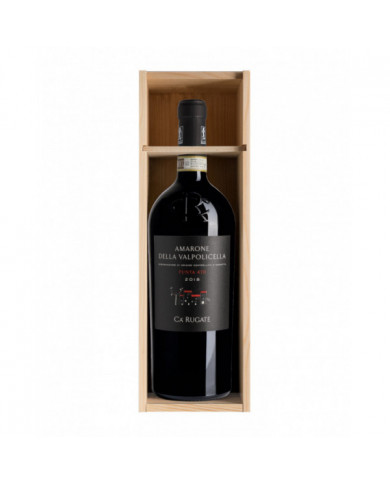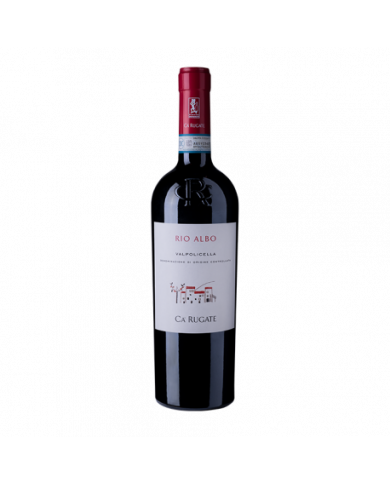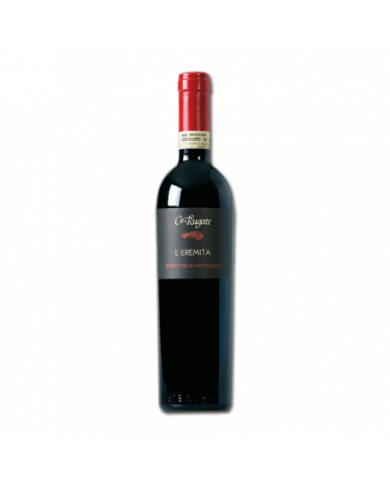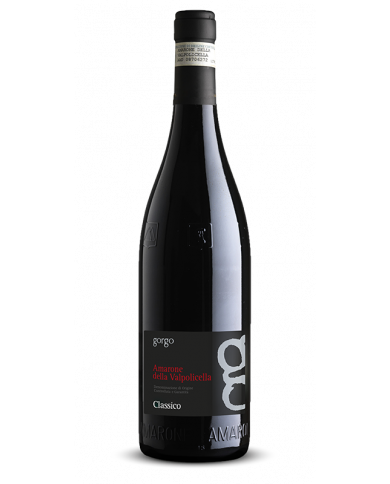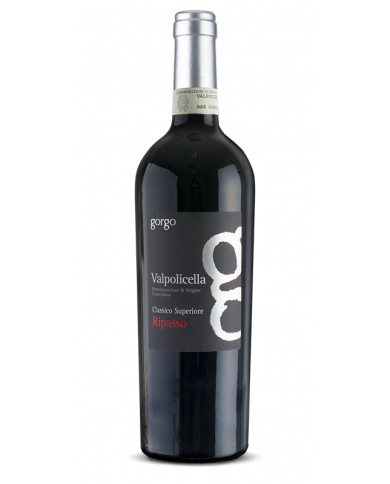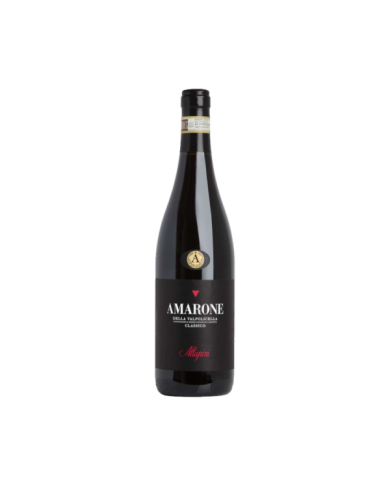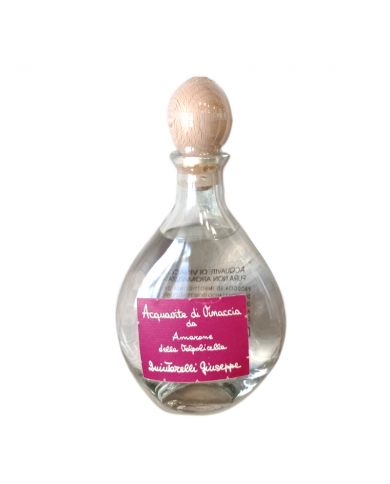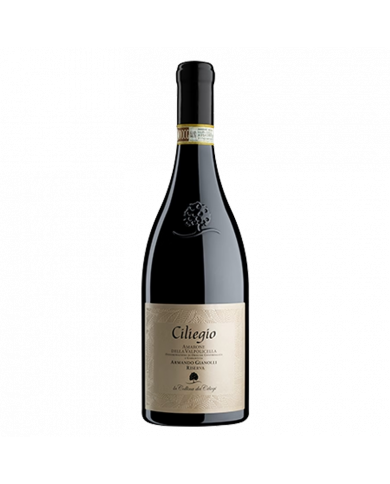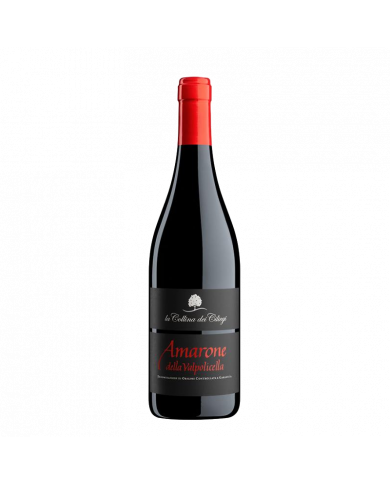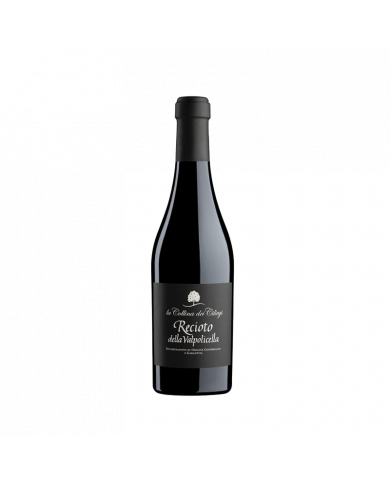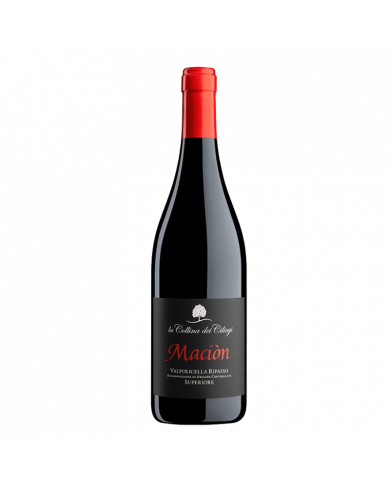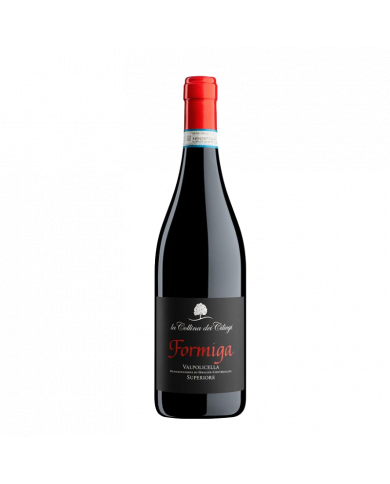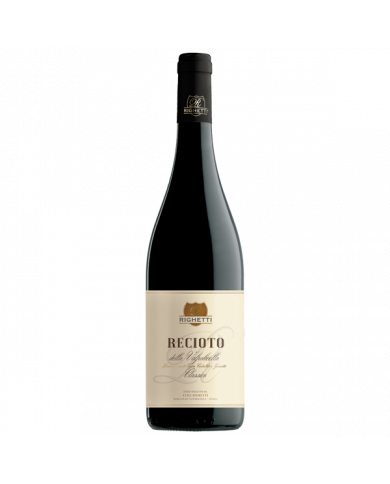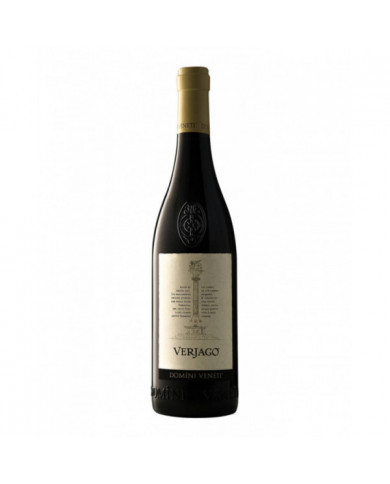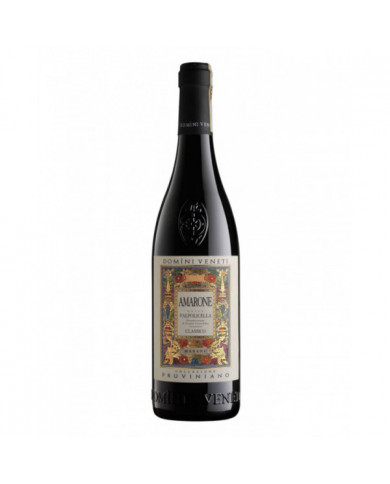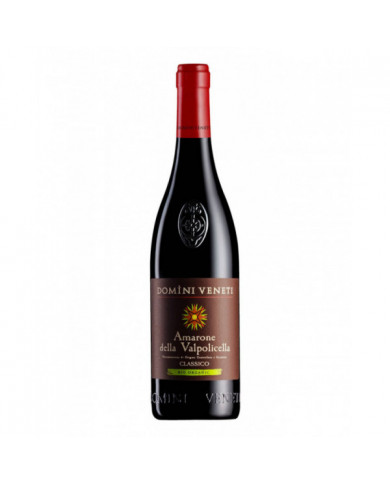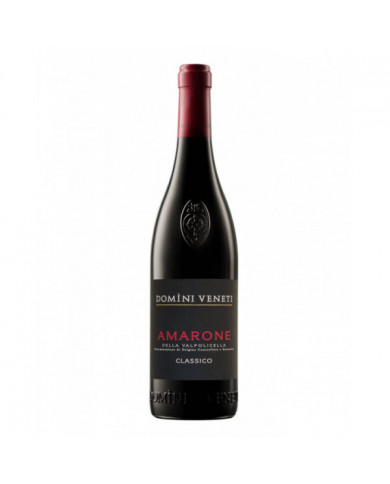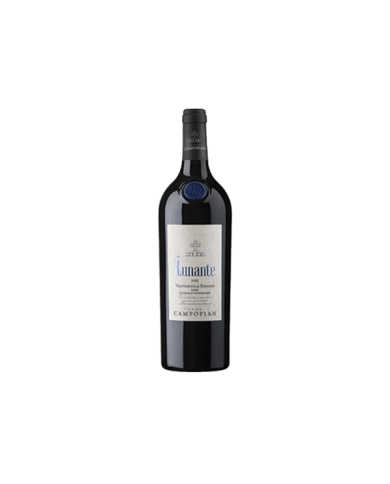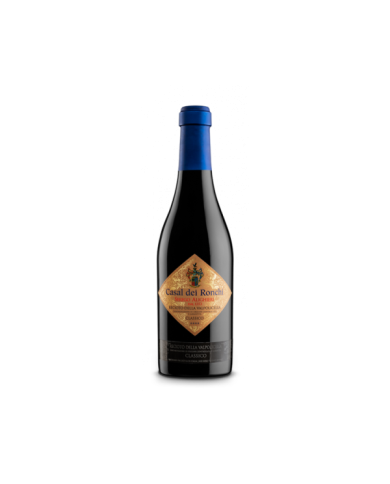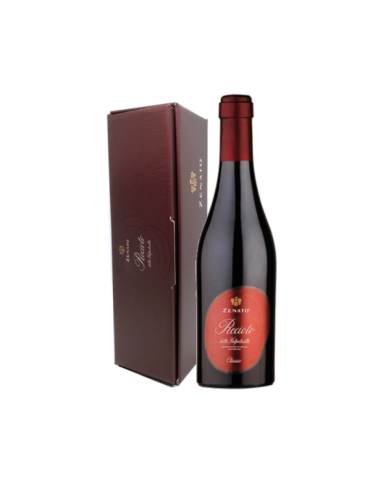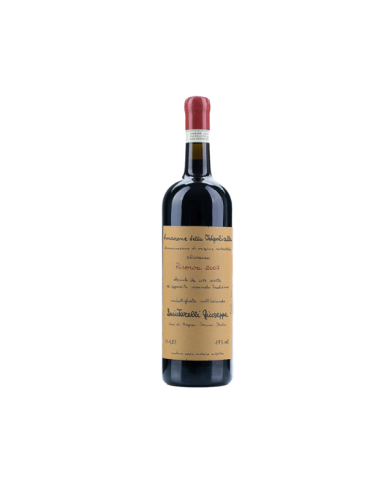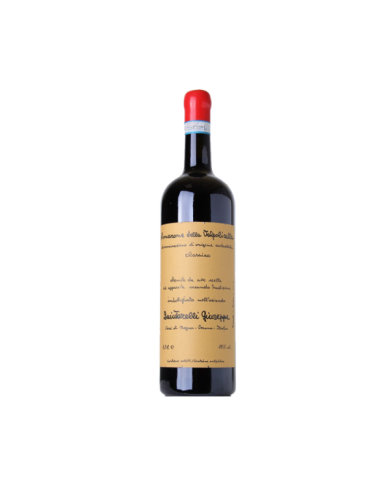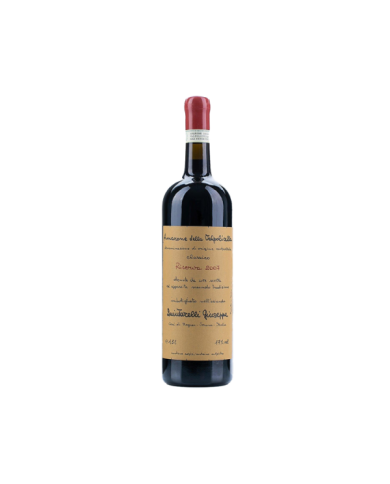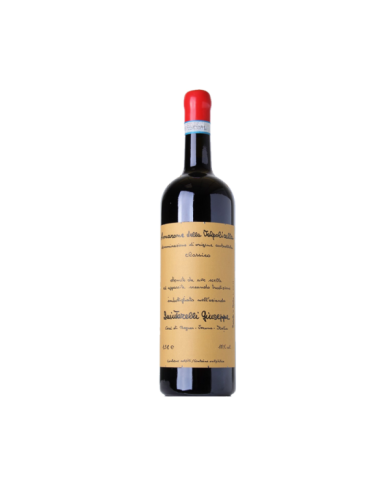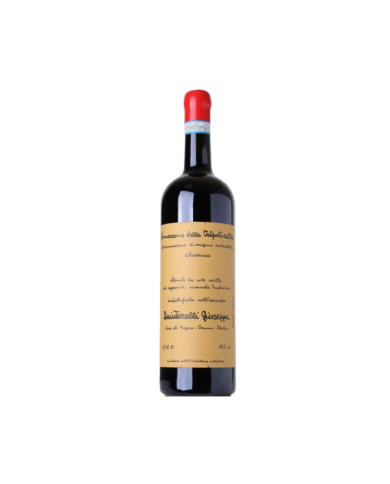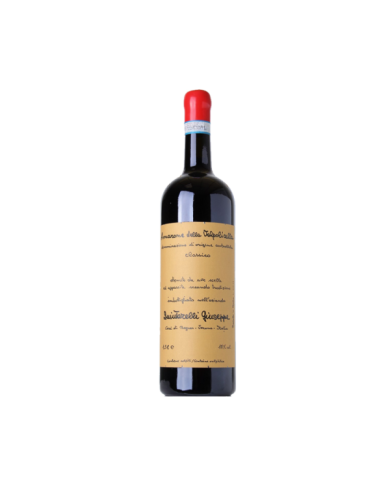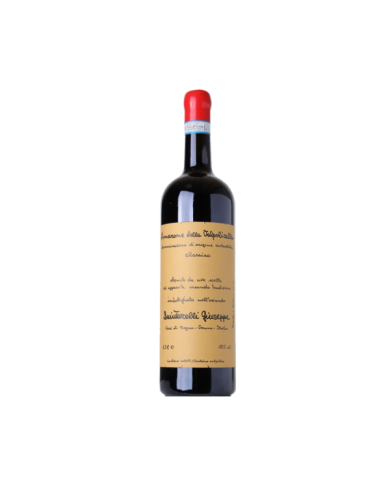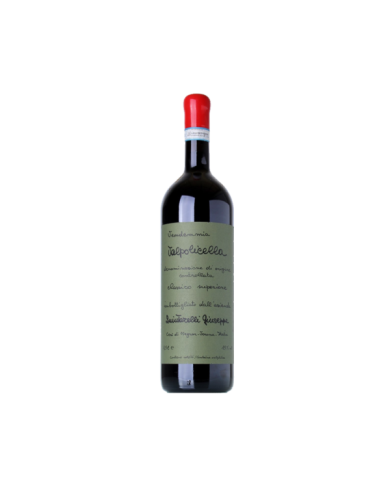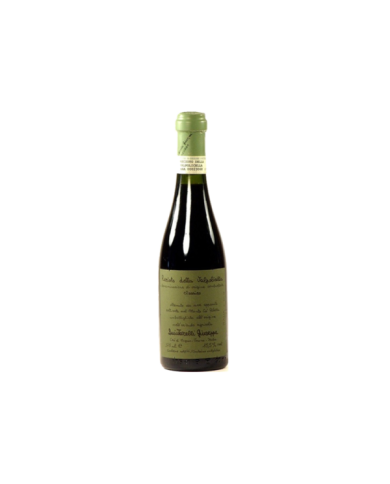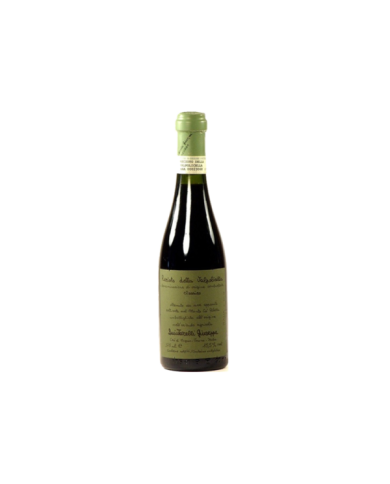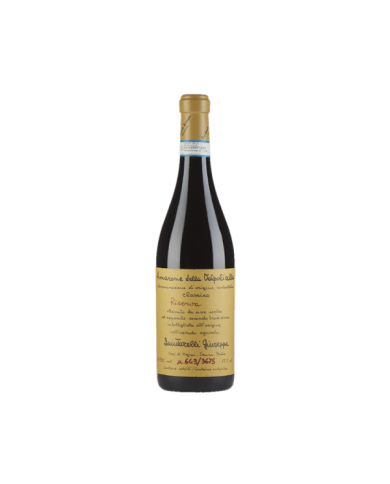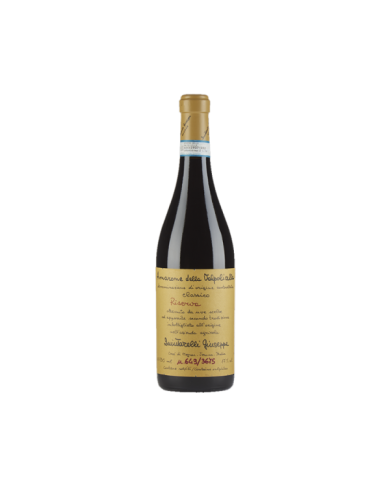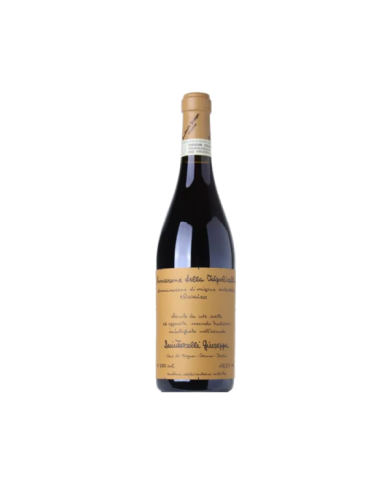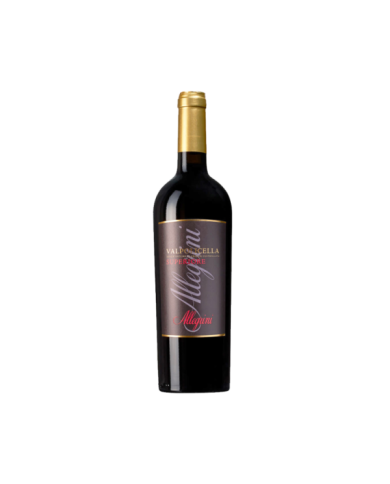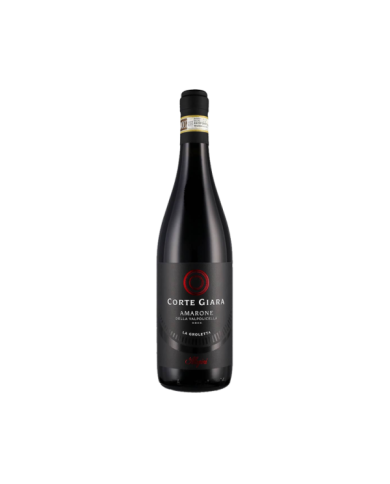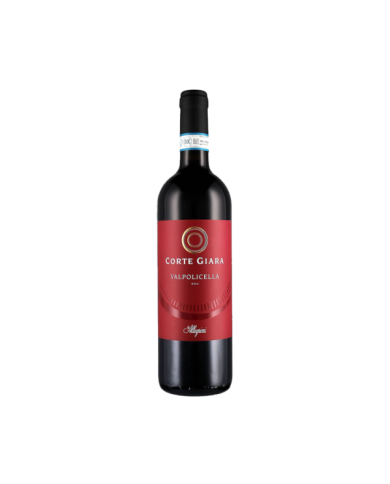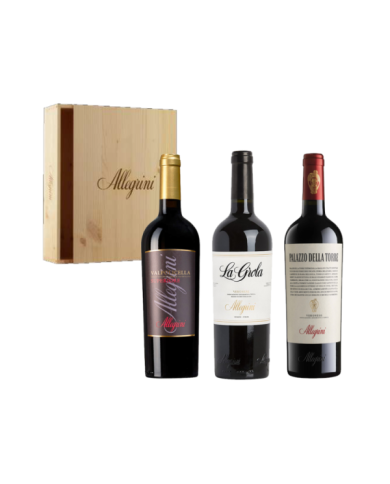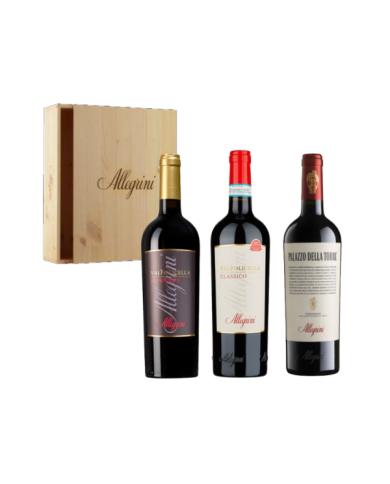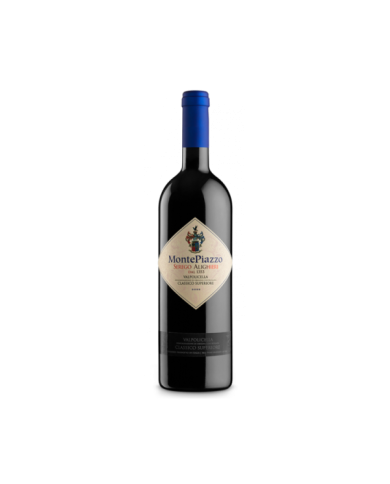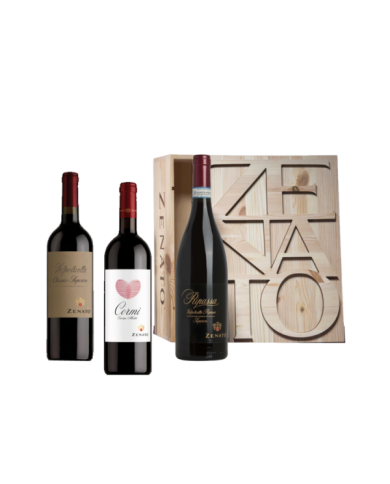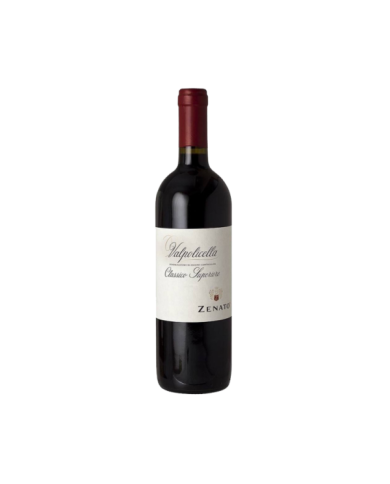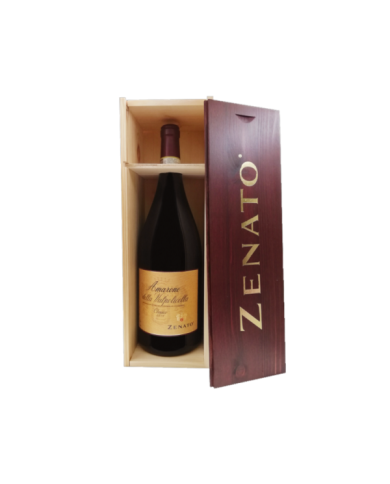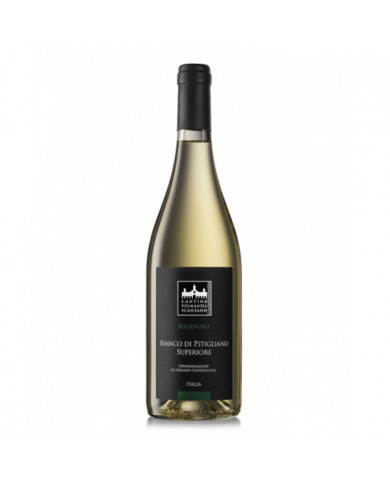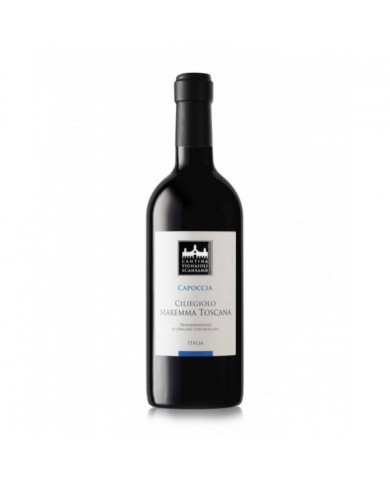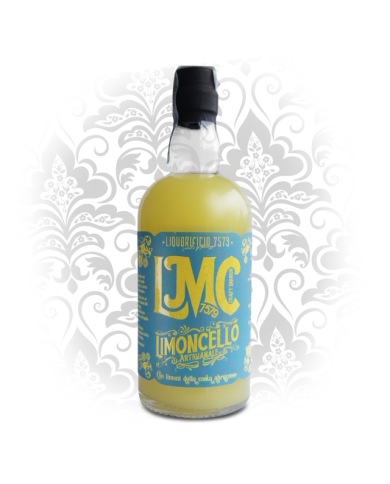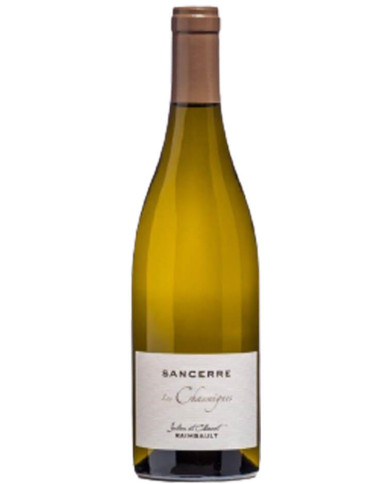Amarone is the symbolic wine of Valpolicella and represents an exciting challenge for the Pieropan Company. This wine comes from the family's desire to compete with the unique territory of Valpolicella, in Cellore di Illasi. Amarone fulfills the dream of an important, rich and structured wine, but also elegant and fine, a distinctive element of the wines of the Pieropan company.
Amarone is the symbolic wine of Valpolicella and represents an exciting challenge for the Pieropan Company. This wine comes from the family's desire to compete with the unique territory of Valpolicella, in Cellore di Illasi. Amarone fulfills the dream of an important, rich and structured wine, but also elegant and fine, a distinctive element of the wines of the Pieropan company.
Ruberpan Valpolicella Superiore wine was born in 2003 from vineyards located in Cellore di Illasi, on Monte Garzon. The new winery is based in the prestigious Villa Cipolla Pieropan in Tregnago, in the province of Verona. The name of the wine derives from ruber, a Latin term that indicates the ruby red color and from ŌĆ£PanŌĆØ which is linked to the family surname.
Ruberpan Valpolicella Superiore wine was born in 2003 from vineyards located in Cellore di Illasi, on Monte Garzon. The new winery is based in the prestigious Villa Cipolla Pieropan in Tregnago, in the province of Verona. The name of the wine derives from ruber, a Latin term that indicates the ruby red color and from ŌĆ£PanŌĆØ which is linked to the family surname.
Ruberpan Valpolicella Superiore wine was born in 2003 from vineyards located in Cellore di Illasi, on Monte Garzon. The new winery is based in the prestigious Villa Cipolla Pieropan in Tregnago, in the province of Verona. The name of the wine derives from ruber, a Latin term that indicates the ruby red color and from ŌĆ£PanŌĆØ which is linked to the family surname.
This Amarone Classico della Valpolicella Riserva is characterized by a deep pomegranate red color. The nose opens with an intense bouquet, with elegant hints of almond, enriched by pleasant aromas of cherry. On the palate it is powerful and complex, with a pleasantly spicy aftertaste. Perfect to accompany roasts and grilled red meats, it is ideal in combination with game and aged cheeses.
This Amarone Classico della Valpolicella Riserva is characterized by a deep pomegranate red color. The nose opens with an intense bouquet, with elegant hints of almond, enriched by pleasant aromas of cherry. On the palate it is powerful and complex, with a pleasantly spicy aftertaste. Perfect to accompany roasts and grilled red meats, it is ideal in combination with game and aged cheeses.
Recioto della Valpolicella Docg Classico is the symbol of the Valpolicella Classica viticulture based on the particular process of natural drying of the ripest grapes. It is considered the origin of Amarone, and its history is ancient, it can even be traced back to the time of the ancient Romans.
Rubino intenso e impenetrabile il colore. Seducente al naso, si apre con note di frutta nera surmatura, che sono impreziosite da complessi richiami alla moka, al cioccolato fondente, al pepe e al rovere. LŌĆÖassaggio ├© di corpo e generoso, regala una trama tannica vellutata e liscia, e possiede una chiusura superba e affascinante.
This Amarone Classico della Valpolicella Riserva is characterized by a deep pomegranate red color. The nose opens with an intense bouquet, with elegant hints of almond, enriched by pleasant aromas of cherry. On the palate it is powerful and complex, with a pleasantly spicy aftertaste. Perfect to accompany roasts and grilled red meats, it is ideal in combination with game and aged cheeses.
The Recioto della Valpolicella of the Giuseppe Quintarelli was born in Negrar, in the heart of the Valpolicella Classica, where the vineyards rest on hilly terrain of volcanic and calcareous nature. Wine capable of rising like few others and enjoying bottle aging.
The Amarone Classico has kept its typicality unaltered by bringing out the "essence of the territory" of Valpolicella in an important way without exceeding the residual sugar. It is a product with personality and great structure but which also manages to communicate elegance and depth in tasting, as well as great complexity.
The grapes are dried for at least 4 months from the harvest, losing at least 40% of their weight. Fermentation temperature between 18┬░ and 22┬░ C. Maceration time: 20 days
The Amarone di Ca' Rugate "Punta 470" announces itself in the glass with a well concentrated garnet colour. The olfactory bouquet that emerges on the nose is broad, where various notes of small berry fruits such as blackberry, cherry and currant can be traced, alternating with spicy references. On the palate it has an excellent structure, powerful and energetic thanks to a round sip, which wraps the palate with softness; it closes with a finish of excellent persistence, characterized by an aftertaste that recalls the flavor of the dried grapes from which the Amarone production process is born. A label of important depth both on the nose and in the mouth, which comes from a meticulous production process, in which each phase of the production is followed with care and attention, until the wine, after a good period of refinement, is not ready to be bottled. A great expression, dense, intense and elegant. The "Punta 470" takes shape from the union between Corvina, Corvinone and Rondinella, varieties grown in soils rich in skeleton and limestone located in the hilly area of Montecchia di Crosara. The manual harvest begins during the second half of September, taking care to place the bunches in boxes without overlapping them, in order to guarantee correct ventilation. The bunches wither for 4-5 months in a fruit cellar, dehydrating and thus concentrating their sugary substances; then we proceed with the pressing, and the must obtained is fermented in steel. The wine ages for 30-36 months in 500-litre oak tonneaux and 25-hectolitre barrels.
The Valpolicella Classico Superiore "Campo Bastiglia" by C├Ā Rugate has a deep garnet red colour. On the nose the aromas are fruity with notes of cherry and red fruit with floral and spice nuances. The taste is full and velvety thanks to the soft tannins that characterize it. Ripasso is a traditional practice which involves, after pressing the dried Amarone grapes, the refermentation of the pomace on a vintage wine. The subsequent refinement takes place 50% in tonneaux and 50% in steel for a period of about 8 months. The best grapes from the various owned vineyards are located in the hilly area of Montecchia di Crosara, in soils rich in skeleton and mainly calcareous. A great wine with excellent value for money.
The Amarone di Ca' Rugate "Punta 470" announces itself in the glass with a well concentrated garnet colour. The olfactory bouquet that emerges on the nose is broad, where various notes of small berry fruits such as blackberry, cherry and currant can be traced, alternating with spicy references. On the palate it has an excellent structure, powerful and energetic thanks to a round sip, which wraps the palate with softness; it closes with a finish of excellent persistence, characterized by an aftertaste that recalls the flavor of the dried grapes from which the Amarone production process is born. A label of important depth both on the nose and in the mouth, which comes from a meticulous production process, in which each phase of the production is followed with care and attention, until the wine, after a good period of refinement, is not ready to be bottled. A great expression, dense, intense and elegant. The "Punta 470" takes shape from the union between Corvina, Corvinone and Rondinella, varieties grown in soils rich in skeleton and limestone located in the hilly area of Montecchia di Crosara. The manual harvest begins during the second half of September, taking care to place the bunches in boxes without overlapping them, in order to guarantee correct ventilation. The bunches wither for 4-5 months in a fruit cellar, dehydrating and thus concentrating their sugary substances; then we proceed with the pressing, and the must obtained is fermented in steel. The wine ages for 30-36 months in 500-litre oak tonneaux and 25-hectolitre barrels.
Ruby red colour. Intense and persistent aromas reminiscent of blackberry and cherry. On the palate it is soft, slightly tannic and with good flavor.
In Ripasso the fruit is combined with spices, thanks to an exclusive technique of these lands which gives it its name: for its grapes, its characteristics and for the way it is produced it is a unique wine. A full-bodied and at the same time captivating, soft and enveloping character. A wine designed to last over time.
This Amarone Classico della Valpolicella Riserva is characterized by a deep pomegranate red color. The nose opens with an intense bouquet, with elegant hints of almond, enriched by pleasant aromas of cherry. On the palate it is powerful and complex, with a pleasantly spicy aftertaste. Perfect to accompany roasts and grilled red meats, it is ideal in combination with game and aged cheeses.
Charming and lively garnet red. On the nose, an explosive note of morello cherry jam accompanied by a refreshing note of rhubarb which gives way to intriguing aromatic herbs in the finish. Great thickness and depth where the alcohol finds a unico.Con balance in the lively acidity and in very elegant tannins. With its characteristic deep and intense garnet red color, the Amarone della Valpolicella Ciliegio belonging to the Armando Gianolli Reserve is one of the best known traditional wines Italian. The taste is full-bodied and persistent, and goes well with the tasting of long-aged cheeses. The scents of fruit jam predominate on the nose, amalgamated with final notes of tobacco.
The Amarone produced by the La Collina dei Ciliegi company has an intense ruby red color with brilliant garnet hues. Complex and sumptuous bouquet on the nose. The initial sweet nuances of cherry and jam are then wrapped in spices and a delicate leather finish. On the palate it is full, enveloping, strong and gentle at the same time, with a long and balanced finish. It fits perfectly with strong stewed and grilled game, braised meats and long-aged cheeses. The aftertaste deriving from the drying of the grapes also marries it with sweet and sour cuisine.
Enveloping in the mouth, with a long and pleasant finish, it is to be tried with a slice of delicious chocolate salami, with a spicy zola crouton and even alone, in peace and relaxation.
You don't live on Amarone alone (unfortunately). But even a good Ripasso della Valpolicella DOC, like this Maci├▓n can give great satisfaction. The Collina dei Ciliegi, modern, well-exposed high-altitude vineyards, produces it from the Corvina Veronese, Corvinone and Rondinella grapes that ripen under the Valpantena sun. After vinification in red, this wine undergoes a second (slow) fermentation, activated by the pomace of Amarone and Recioto. This slow passage gives the wine greater complexity, without reaching the levels of the two noble older brothers. A phase of maturation in oak barrels follows which lasts for about 9 months and, subsequently, refinement in glass for another 6 months. Deep ruby red with good consistency, the nose is fragrant, with clear sensations of fruit jam reminiscent of plums and cherries. In the mouth, then, it has a decisive attack and a decidedly fruity soul. A wine with a good structure, it enjoys a very soft finish. On the table it goes very well with classic roasts and delicious first courses such as a rich baked pasta.
Ruby red wine with aromas of berries and cherries. On the palate it is pleasant and fresh with an average long and pleasant aftertaste. The ideal accompaniment for dishes based on softer meat (steak) or seasoned cured meats. Try serving cooler.
Amarone is the symbolic wine of Valpolicella and represents an exciting challenge for the Pieropan Company. This wine comes from the family's desire to compete with the unique territory of Valpolicella, in Cellore di Illasi. Amarone fulfills the dream of an important, rich and structured wine, but also elegant and fine, a distinctive element of the wines of the Pieropan company.
Amarone is the symbolic wine of Valpolicella and represents an exciting challenge for the Pieropan Company. This wine comes from the family's desire to compete with the unique territory of Valpolicella, in Cellore di Illasi. Amarone fulfills the dream of an important, rich and structured wine, but also elegant and fine, a distinctive element of the wines of the Pieropan company.
Ruberpan Valpolicella Superiore wine was born in 2003 from vineyards located in Cellore di Illasi, on Monte Garzon. The new winery is based in the prestigious Villa Cipolla Pieropan in Tregnago, in the province of Verona. The name of the wine derives from ruber, a Latin term that indicates the ruby red color and from ŌĆ£PanŌĆØ which is linked to the family surname.
The grapes, the same used for the production of Amarone, are left to dry in the plateaus for a few months and pressed in March when they have reached their maximum sugar concentration.
In the Middle Ages, the name Veriacus indicated the valley of Negrar. A wine that has a story to tell, starting from the label and the collar it carries. A story that speaks of typicality, of tradition, of the pursuit of excellence.
The Pruviniano Collection by Domìni Veneti was born from the desire to discover and enhance the territories and wines from grapes grown in the Marano valley in Valpolicella Classica. Until 1177 these territories were in fact called Pruviniano.
Recioto della Valpolicella Docg Classico is the symbol of the Valpolicella Classica viticulture based on the particular process of natural drying of the ripest grapes. It is considered the origin of Amarone, and its history is ancient, it can even be traced back to the time of the ancient Romans.
The Valpolicella Classico Superiore of the Giuseppe Quintarelli farm was born in Negrar, in the heart of the Valpolicella Classica, where the vineyards rest on hilly terrain of volcanic and calcareous nature. Wine capable of rising like few others and enjoying bottle aging.
The Recioto della Valpolicella of the Giuseppe Quintarelli was born in Negrar, in the heart of the Valpolicella Classica, where the vineyards rest on hilly terrain of volcanic and calcareous nature. Wine capable of rising like few others and enjoying bottle aging.
The Recioto della Valpolicella of the Giuseppe Quintarelli was born in Negrar, in the heart of the Valpolicella Classica, where the vineyards rest on hilly terrain of volcanic and calcareous nature. Wine capable of rising like few others and enjoying bottle aging.
This Amarone Classico della Valpolicella Riserva is characterized by a deep pomegranate red color. The nose opens with an intense bouquet, with elegant hints of almond, enriched by pleasant aromas of cherry. On the palate it is powerful and complex, with a pleasantly spicy aftertaste. Perfect to accompany roasts and grilled red meats, it is ideal in combination with game and aged cheeses.
This Amarone Classico della Valpolicella Riserva is characterized by a deep pomegranate red color. The nose opens with an intense bouquet, with elegant hints of almond, enriched by pleasant aromas of cherry. On the palate it is powerful and complex, with a pleasantly spicy aftertaste. Perfect to accompany roasts and grilled red meats, it is ideal in combination with game and aged cheeses.
This Amarone Classico della Valpolicella Riserva is characterized by a deep pomegranate red color. The nose opens with an intense bouquet, with elegant hints of almond, enriched by pleasant aromas of cherry. On the palate it is powerful and complex, with a pleasantly spicy aftertaste. Perfect to accompany roasts and grilled red meats, it is ideal in combination with game and aged cheeses.
Allegrini , thanks to the knowledge gained through years of experimentation and research, has perfected a style of Amarone capable of maintaining and enhancing the integrity of the fruit, thanks to a mix of tradition and innovation that has its roots in 1854 . Amarone is the result of all the wisdom of the Allegrini family, a true classic of the denomination, a red that sums up tradition, territory and peasant wisdom . Corvina, Corvinone, Rondinella and Oseleta are left to wither at least until December, checking their health on a daily basis: the result is history, passion and continuous growth.
Amarone della Valpolicella Corte Giara represents an eclectic and modern interpretation of the Veronese winemaking tradition that arises from a project developed in 1989 by the Allegrini family, responding to the need to adapt classic production to daily consumption. This Amarone faithfully reflects the tradition that makes it a great red of international fame, but at the same time expresses a modern style, in step with the evolution of contemporary taste. In addition to replicating the traditional procedures required for its vinification, we find a specific aging of 15 months that gives it a peculiar intensity and balance, making it pleasant even for less trained palates.
Valpolicella di Corte Giara - Allegrini is a Venetian red wine made from Corvina and Rondinella grapes, aged for a short time in steel tanks to maintain an intense and pleasant fruity fragrance. It smells of cherries and black pepper, with details of officinal herbs and is released in a sip balanced between softness and freshness.
Tradition and innovation find an excellent synthesis in Corte Giara's Magnum Amarone Classico , the red wine with a thousand-year history, expression of a territory that has always been suited to the production of great wines: Valpolicella. This is where the story of the Allegrini family originates, which for 400 years has dedicated itself to viticulture with unchanged passion.
Valpolicella Ripasso ŌĆ£La GrolettaŌĆØ is a soft and round red wine produced in the Corte Giara estate of the Allegrini family, with aging in Slavonian oak barrels for about a year. Enveloping aromas of black cherries, red fruit and sweet spices follow each other in a taste with body, richness and balance
- _x0001_
- Valpolicella Superiore DOC 2018 _x0001_
- Palazzo della Torre Veronese IGT 2017 _x0001_
- La Grola Veronese IGT 2017
- _x0001_
- Valpolicella Classico DOC 2019 _x0001_
- Valpolicella Superiore DOC 2018 _x0001_
- Palazzo della Torre Veronese IGT 2017
Beautiful painted wooden box consisting of two bottles
- _x0001_
- Amarone della Valpolicella Classico DOCG 2016 La Grola Veronese IGT 2017
Elegant, original wine with good structure and complexity. It is the archetype of Valpolicella described by Hemingway, " as cordial as the house of a brother you get along with ". The style of the noble Casato is emphasized by the use of the exclusive Molinara clone Serego Alighieri and by the refinement in cherry wood barrels.
- _x0001_
- Valpolicella DOC Classico Superiore 2018 _x0001_
- Cormì Corvina Merlot Veneto IGT 2015 _x0001_
- Valpolicella Ripasso Superiore DOC Ripassa 2017
Zenato 's Ambrogio della Valpolicella is born in S. Ambrogio di Valpolicella, a hilly area on the Veronese shore of Lake Garda, within the "Classico" area of Valpolicella. It is in fact a real pleasure to give it and receive it: those who give it know they have purchased a great product and those who are passionate about wines know that when they receive an amarone, they can enjoy unique sensations.
Beautiful wooden box consisting of 3 bottles of wine:
- _x0001_
- Amarone della Valpolicella Classico 2016 _x0001_
- Valpolicella Superiore "Ripassa" - Zenato 2017 _x0001_
- Cresasso Veronese IGT 2015
Valpolicella Denomination: A Journey into the Heart of Italian Wines
The Valpolicella Denomination is an authentic excellence of the Italian wine scene. Located in the Veneto region of northeastern Italy, Valpolicella is famous for its high-quality wines and rich winemaking tradition. In this article we will explore the history, the grape varieties, the production processes and the distinctive characteristics that make the Valpolicella Denomination so appreciated internationally.
Introduction to the Valpolicella Denomination
The Valpolicella Denomination is a winegrowing area in the Veneto region, known for the production of high quality wines. This denomination includes several areas, including Valpolicella Classica, Valpantena, Valpolicella Est, Valpolicella Valdadige and the Recioto della Valpolicella area. Each area contributes its own unique characteristics to the production of Valpolicella wines.
History and territory of Valpolicella
The history of viticulture in Valpolicella dates back to Roman times, but it is over the centuries that this region has acquired a reputation for winemaking excellence. The Valpolicella area is characterized by gentle hills, a Mediterranean climate and a soil rich in calcareous marl, gravel and clay. These geographical and climatic conditions offer an ideal environment for the cultivation of native vines.
Main grape varieties of Valpolicella
The Valpolicella denomination is distinguished by the use of native vines which give the wines a unique character. The main vines grown in the region are Corvina Veronese, Corvinone, Rondinella and Molinara. Corvina Veronese is the dominant grape variety, known for its contribution to the structure, color and complex aromas of Valpolicella wines.
Production process of Valpolicella wines
The production of Valpolicella wines follows a rigorous process that begins with the grape harvest, usually between September and October. After harvesting, the grapes are selected and placed in boxes to preserve their integrity. Subsequently, the grapes are gently pressed to obtain the must, which is fermented at a controlled temperature.
A distinctive aspect in the production of Valpolicella wines is the use of drying. A part of the grapes, in particular for the production of Amarone della Valpolicella and Recioto della Valpolicella , is dried in ventilated rooms for several months. During drying, the grapes lose part of their water, concentrating their sugars and aromas.
Types of Valpolicella wines
The Valpolicella Denomination includes different types of wines, each with its own unique characteristics. Among the best known we find:
- Valpolicella Classico: a young and fruity red wine, ideal for everyday consumption.
- Valpolicella Superiore: a more structured and complex wine, obtained from selected grapes and a longer aging period.
- Amarone della Valpolicella : a dry, intense and full-bodied red wine, obtained from dried grapes.
- Recioto della Valpolicella : a sweet and enveloping red wine, also produced from dried grapes.
Organoleptic characteristics of Valpolicella wines
Valpolicella wines are characterized by a vast range of aromas and flavours. The Valpolicella Classicos offer notes of fresh fruit, such as cherries and strawberries, with a pleasant freshness. More structured wines, such as Amarone della Valpolicella , have complex aromas of dried fruit, spices, tobacco and chocolate. Recioto della Valpolicella , on the other hand, is distinguished by its sweet aromas of ripe fruit, raisins and honey.
Culinary pairings with Valpolicella wines
Valpolicella wines lend themselves to multiple culinary combinations. The Valpolicella Classicos go well with pasta dishes, risottos, white meats and fresh cheeses. The Amarone della Valpolicella and the Recioto della Valpolicella go splendidly with red meats, roasts, aged cheeses and dark chocolate. The complexity and structure of these wines also make them ideal for meditation.
Visit Valpolicella and its cellars
For wine lovers, visiting Valpolicella and its cellars is an unforgettable experience. Numerous wineries offer guided tastings, vineyard visits and detailed explanations of the wine making process. These visits allow you to immerse yourself in the local wine culture, discover the secrets of the native vines and taste the wines directly from the producer.
The Valpolicella Denomination represents a real Italian enological treasure. Its millenary history, the native vines, the traditional production processes and the organoleptic characteristics of the wines have contributed to making it famous all over the world. If you are passionate about quality wines, you cannot miss the opportunity to taste the fine Valpolicella wines.
FAQ (Frequently Asked Questions)
What is the origin of the Valpolicella denomination?
The Valpolicella denomination has ancient origins in the Veneto region of Italy. Its history dates back to Roman times.
What are the main grape varieties used in the production of Valpolicella wines?
The main grape varieties used in the production of Valpolicella wines are Corvina Veronese, Corvinone, Rondinella and Molinara.
What are the best known types of Valpolicella wines?
The best known types of Valpolicella wines are Valpolicella Classico, Valpolicella Superiore, Amarone della Valpolicella and Recioto della Valpolicella .
What are the recommended food pairings for Valpolicella wines?
Valpolicella wines pair well with a variety of dishes. Valpolicella Classico goes well with pasta, risotto, white meats and fresh cheeses. Amarone della Valpolicella and Recioto della Valpolicella go wonderfully with red meats, roasts, aged cheeses and dark chocolate.
Is it possible to visit the Valpolicella cellars?
Yes, many Valpolicella wineries are open to the public and offer guided tours, tastings and the possibility of buying their wines directly on site.

